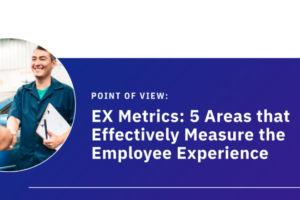Transform the workplace with InMoment’s Employee Experience that enables you to listen to employees and take transformational action – improve performance, tenure, and overall employee fulfillment.
Collect Employee Experience Signals

Adapt, Innovate, and Drive Change
Only 9% of HR Leaders are ready for the new normal. InMoment helps you navigate the challenging new work environment by identifying the moments that matter most to your employees. Effortlessly collect employee feedback, combine the insights with operational data from your HRIS platform, and receive best practice recommendations to increase staff engagement and retention.
Give Employees a Voice
Employees excel when they have a voice. The employees’ perspective on improving delivery of customer experience provides brands with a unique look into customers’ experiences, emotions, delights, and struggles. InMoment’s VoE solution can be implemented at established touchpoints and intervals, leveraged through ad hoc invites and “always open” portals, or built into your closed loop process for real-time understanding of issue resolution and root cause.
Gain Rich Insights into the Employee Journey
Prevent Employee Churn
InMoment’s award-winning text and predictive analytics provides role-based insights from employee feedback to predict and prevent issues and identify powerful coaching opportunities. Our analytics engines are specifically designed to analyze employee experience responses and understand the themes, sentiments, and emotions in aggregate—quickly and effectively.
Learn MoreTake Smarter, Employee-focused Actions
Create a Culture of Engaged Brand Ambassadors
With unprecedented changes to our society, economy, and businesses, the way we engage with our employees has never been more important. InMoment delivers insights and recommends actions to engage staff via any channel, including mobile app, office television screens, and even offline reports.
Learn More
Customer Story
70% Reduction in Employee Churn
While running an employee experience campaign with InMoment, a leading global food services received 40,000 unfiltered responses from its employees. This feedback was not only integrated into its brand refresh, it led to the launch of a global people platform for 300,000 employees resulting in reductions in turnover of up to 70% among participating locations and huge subsequent savings in replacement costs.
See More Customer Stories
See ROI in Half the Time
InMoment’s integrated CX approach increases customer lifetime value and bottom line performance in just 12 months, significantly faster than the industry average of 25 months!



